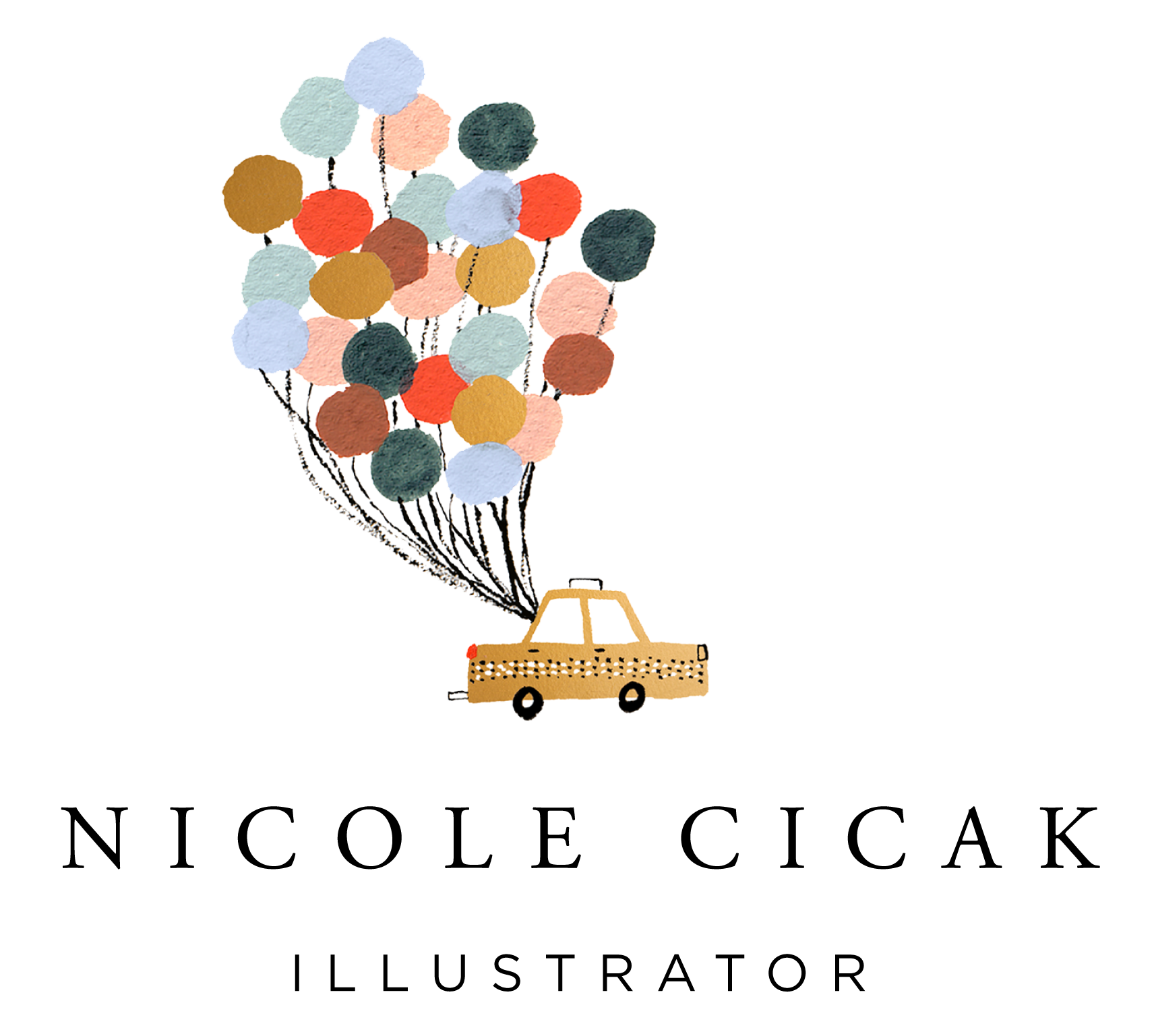Color Series II: How I Mix My Colors
Mixing colors takes a lot of practice. And the way in which you mix colors depends on the medium you’re using - the main factor being dry times.
Since I use gouache, that’s what I’m going to talk about in this article. Gouache dries very quickly - within a matter of minutes. Because of this, you can’t mix large batches of color at once. It will dry before you can use all the paint. While you can rewet the paint, the thickness will not be the same as a fresh mixture, especially if you want a rich, solid application. Rewetting dried gouache works best for a small section, or if you’re going for a more translucent look.
The best approach to mixing gouache is to keep the color formulas simple. I don’t use more than three colors when mixing a shade. Usually, only two, since I’m remixing paint often.
I also have a lot of “shortcut” shades so I don’t have to constantly mix colors. For instance, I often use peach in my work. I could make this shade by mixing red, yellow, and white. Or I can use the Pale Rose Blush color Winsor & Newton sells by the tube (one of my favorite shades). I also have shortcut shades for various browns, pinks and greens.
There are five shades every artist should have in their arsenal, no matter what medium they’re using. They are white, black, red, yellow, and blue. I buy large tubes of white and black, because I use these colors the most. From these five shades, you can make almost any shade known to man. Artists have individual preferences as to which shades of these colors work best. Here are my favorites:
To find your five perfect shades of these colors takes practice. I recommend taking your best guess, and then assessing where you feel limited. Pay attention to the colors you’re mixing the most, and see if you can purchase some shortcut shades as well.
Now I’m going to talk about the different methods of mixing colors.
TINT
You adjust the tint by adding various levels of white to your mixtures. You could also call these shades pastels. In my work, I’m most frequently adjusting the tint, because I’m very drawn to these light, bright colors.
SHADE
You can add various levels of black to your mixtures to adjust the shade. This is how you get your navy blues, maroons, and hunter greens.
TONE
Also known as saturation, or vibrancy. This is where you add white and black (aka gray) to a color to make it more muted. This is a great way to add sophistication to your work. I’ve noticed expert artists have a wonderful grasp on how to mute their colors just right.
TRANSPARENCY
While not always mentioned, this is an important technique to note with gouache. If you want to make a color lighter, you have two options - adding white (adjusting the tint) or adding water (adjusting the transparency). Adjusting the transparency will give your paint more of a “watercolor” effect. Just know that watered down gouache won’t layer well over other colors. It’s best when applied as a background or base layer.
THE COLOR WHEEL
It’s amazing how many colors you can create using the techniques above - especially when you start mixing your primary colors to create secondary (purple, orange, green) and tertiary colors (everything in between primary and secondary). Depending on which primary colors are used (starred below), everyone’s color wheel will look a little different. As you can see, mine is more muted than the typical ones you see. That’s because of the color shades I’m using. If I were to use more traditional shades of red, blue, and yellow, my color wheel would look more vibrant.
The best way to become a master at mixing colors is to find a swatch of a color you like, online or in person, and challenge yourself to recreate it with your paints. The less paints you use to recreate the shade, the better. By doing this exercise over and over again, you’ll gain a better understanding of how mixing colors works.
It’s important to note that wet paint doesn’t look exactly the same as dry paint. With gouache, colors often darken as they dry.


















Thanks for stopping by! I’m an illustrator & writer. I’ve been running my own creative business since 2015. My mission is to help artists find their unique creative voice, build positive habits, and do what they love for a living.